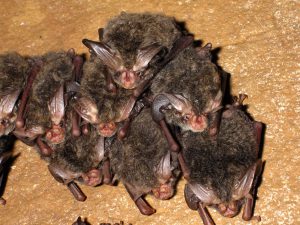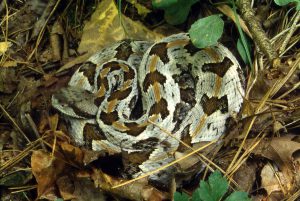Research Spotlight: Understanding Habitat Connectivity to Inform Conservation Decisions


Habitat fragmentation, in combination with climate change, is already affecting biodiversity in the Southeastern U.S., in particular as species shift their ranges to move to cooler places.
The most common recommended strategy to protect wildlife as they move is to connect their habitats, providing them safe passage. There are great challenges to implementing this strategy, however, because most intervening lands between suitable habitat patches in the Southeast are held in private ownership. In partnership with South Atlantic Landscape Conservation Cooperative members, researchers assessed current and projected connectivity for three species that inhabit bottomland hardwood forests: black bear, Rafinesque’s big-eared bat, and timber rattlesnake. Results provide managers and regional landscape planners with applied tools they use to make informed conservation decisions. The Southeast Climate Science Center is central to these discussions, as we work to convene the best available peer-reviewed science to engage multiple stakeholders in preserving wildlife and fisheries populations.


Main Conclusions
- Under future projected climate conditions, there will be fewer connections in the landscape for species to move between suitable habitats
- Future landscape connectivity will be affected in a species-specific manner, suggesting a limited ability to use “umbrella species” to make generalized management decisions
- Black bears will likely experience a smaller loss of connectivity as compared to Rafinesque’s big-eared bats and timber rattlesnakes
- Changes in connectivity will vary by geographic region, with the Southern Appalachian Mountains and the Cumberland Plateau least likely to experience a large decrease in connectivity
- Land managers and planners can use our results to make more effective decisions about where to focus time and financial resources on protecting critical habitat in their region.
Conservation Corridor
A result of this research was the creation of Conservation Corridor, a website dedicated to advancing the latest information on corridor science and tools for managers who are planning for corridors.
ConservationCorridor.org promo (HD) from ConservationCorridor on Vimeo.
Conservation Corridor will provide up-to-date findings from science that will inform applied conservation. And, we will highlight new innovations in applied conservation, with the goal of guiding the direction of applied science toward management needs.
Fiscal Year: FY 12-14
Project Leader: Nick Haddad, NCSU Department of Applied Ecology
Research Collaborators: University of Florida, The Wildlands Network
Stakeholders: State and Federal natural resources managers in the southeastern U.S.
Get more information about this project at the SE CSC project page and see its footprint in the SE CSC Story Map.
Currently funded work will assess trade-offs between current and future connectivity and extend work on the prioritization of core habitat areas and central points of connectivity. Get more information by viewing the project page for second phase.
- Categories:
